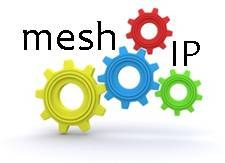 Cloud computing promises a low cost of entry and fast return on investment, but that ROI can fall short of expectations if hidden costs are left out of the equation.
Cloud computing promises a low cost of entry and fast return on investment, but that ROI can fall short of expectations if hidden costs are left out of the equation.
A new white paper from global IT association ISACA, “Calculating Cloud ROI: From the Customer Perspective,” takes a close look at the true costs of cloud migration and offers a practical framework for calculating returns on migrating to the cloud.
The free white paper outlines five hidden costs that enterprises may fail to anticipate when moving quickly to cloud-based services:
1. Cost of bringing services back in-house due to regulatory change (e.g. stricter data privacy laws)
2. Cost of implementing and operating countermeasures to mitigate risk
3. Unexpected expenses involved in initial migration of systems
4. Loss of internal IT knowledge providing competitive differentiation
5. Lock-in with specific cloud provider or proprietary service model, which may slow down future adoption of open standards-based services
“Cloud computing represents significant changes to the delivery of traditional IT services, and its advantages have been well documented for a number of years. However, any movement to a new IT delivery model should identify the proposed benefits and the cost to achieve these over its entire life cycle,” said Vaughan Harrison, President of the ISACA Wellington Chapter and Director at PricewaterhouseCoopers New Zealand.
“Organisations should consider the impact of moving to a cloud environment by identifying potential movements in its current strengths and weaknesses, the ability to achieve future aspirations, cost of service movements and changes to its risk profile. This does not need to be a complex analysis; however, it should be thorough enough to enable an informed and supported decision.”
Enterprises are increasingly turning to public, private or hybrid cloud models to achieve such benefits as shifting cost from capital to operational, becoming more agile, and redeploying IT resources to higher-value-added activities.
While these benefits are achievable, this latest guidance from ISACA details a 12-step process that takes a frank look at the complexity of cloud computing options and the importance of making an informed decision about long-term costs and payback.
An example of positive ROI as a result of cloud migration is global organisation CA Technologies, which uses a private cloud to enable resource pooling and on-demand and scheduled resource acquisition, and to support data centre consolidation and standardisation.
“Early in our deployment we consolidated 44 locations and were able to drive millions in real estate savings and in productivity gains, as well as a 25 percent reduction in budget,” said George Watt, vice president of strategy, CA Technologies, who led the cloud deployment.
“Yet, our newfound agility was the unsung hero. From our perspective, one of the most important steps in calculating ROI is ensuring second-order costs are considered so there is a legitimate understanding of the complete cost of cloud and non-cloud options.”
To help more companies effectively calculate the ROI for their cloud initiatives, the “Calculating Cloud ROI” white paper offers the following practical tips:
- Balance the need to be accurate with the need to reach a decision. An overly complex ROI calculation can make it hard to understand why a decision was made or measure its effects. Do as thorough a job as possible, but don’t let perfect be the enemy of good.
- Cloud is not right for every organizational need. The type of cloud service selected—and the decision to use cloud computing services—depends on the specific enterprise’s risk appetite.
- ROI is a good start, but other financial indicators should also be calculated. ROI coupled with total cost of ownership (TCO), net present value (NPV), internal rate of return (IRR), or payback period will provide a more accurate financial picture across the life span of the cloud investment.
- It is far easier and less costly to change a decision when it is still on the drawing board. The time an enterprise spends considering the ROI of various options and selecting the best fit for its needs is time well spent.
- The Customer Edge Drives the Need for NaaS - June 25, 2023
- Blockchain Evolves And Secures - January 13, 2019
- Bessemer Ventures’ 2018 Cloud Computing Trends - February 25, 2018




